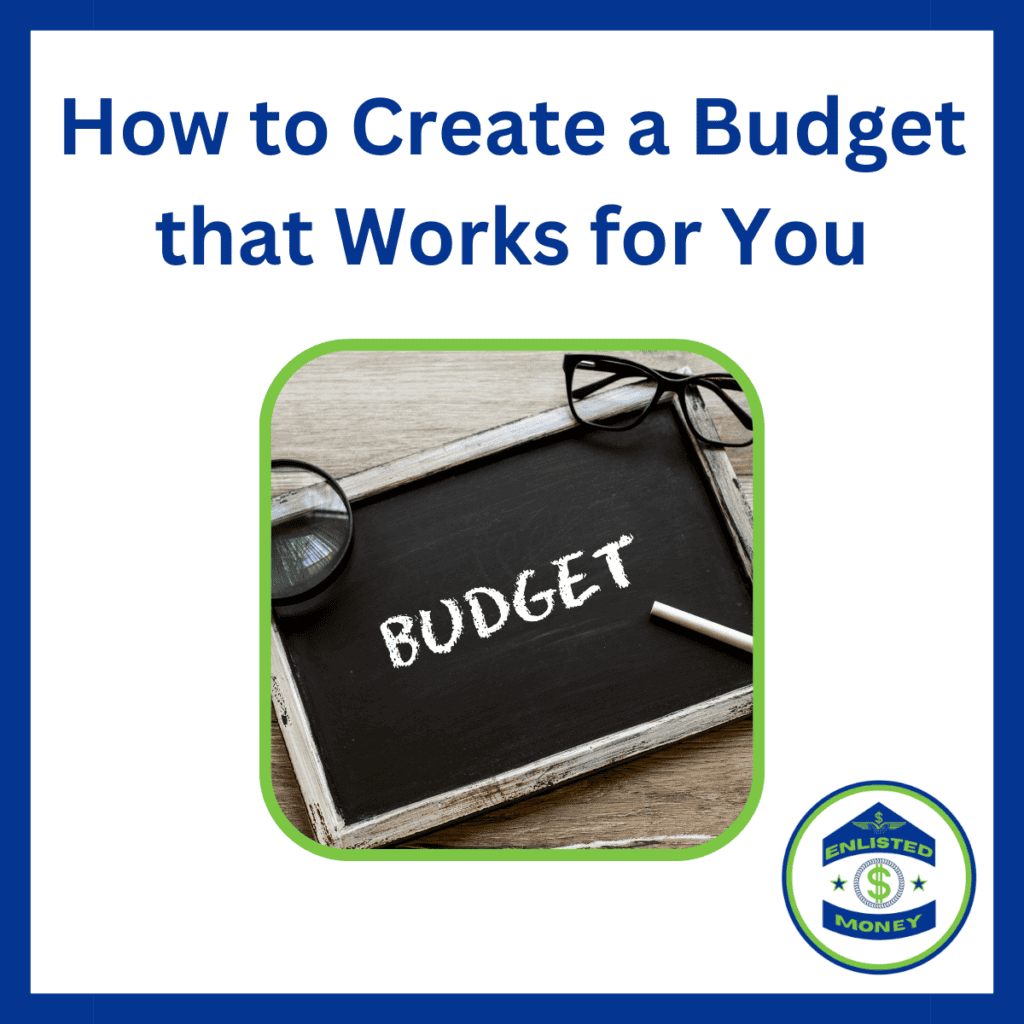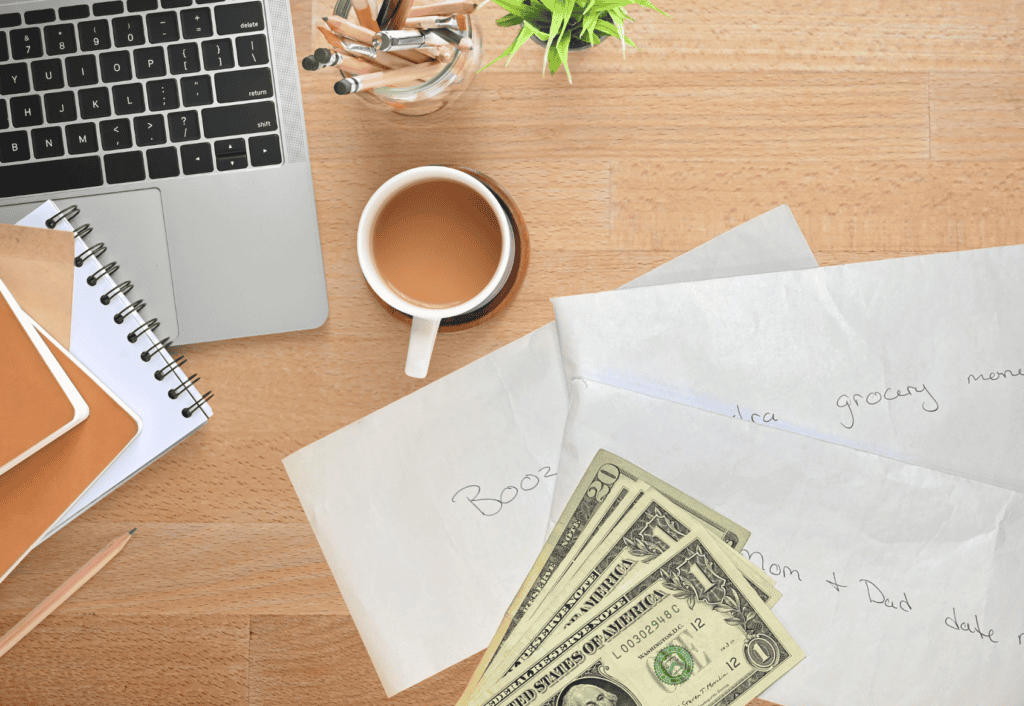
Creating a budget for the first time can be so intimidating, but it doesn’t have to be! Whether you know a little or a lot about personal finance, having a budget is vital. No matter what, you need to make a plan that works for you and others with whom you share your financial life.
If you haven’t already, grab a copy of my free budget template below. This is literally the same budget template I’ve been using for years.
Why You Need a Budget
You need a budget to understand where your money is going. If you don’t plan where your money will go, it will get away from you quickly. Having awareness of where your money is going and why helps you make a game plan moving forward. If you heard that cutting back on lattes will solve your problems, but you only spend $10 each month on coffee, you’ll be disappointed when you’re not magically a millionaire after skipping coffee a couple of times.
How to Make Time for Budgeting
You DO NOT have to spend a ton of time or money making a budget. If you have a busy schedule (we all do), then just pick a day and time to set aside solely for the purpose of making a budget. Tell yourself, “This Sunday at 2 p.m. I will sit down for 1 hour and start my budget.” Make it a priority, tell everyone in the house that you will be unavailable, and stick to it.
Starting Your Budget
The first thing you need to do is determine what format you’ll use to create your budget. You can use spreadsheets, like the template we have, budget apps like You Need a Budget (YNAB), or even envelopes and a pad of paper. You can always change the format later. Pick one and move on.
Pick a system that works based on your personality type and what you’ll actually use. Personally, we use a blend of tools. We have a master budget on a spreadsheet that we keep updated at least annually (on Money Day) or when there’s a big change. We implement the budget using a blend of automation, envelopes, and Google Forms.
It doesn’t have to be complicated; it just has to work.
What to Include in Your Budget
In a word, everything! No matter how small or insignificant you think the expense is, it should be accounted for in your budget. The idea is to plan out and capture every expense. However, you don’t have to get super carried away either. Let me explain.
Big Ticket Items First
You’ll want to get all the big-ticket items accounted for first. Make sure you include your rent or mortgage, groceries (more on that later), car payments, childcare costs, car insurance, and utilities. These are some of the biggest expenses many people have.
Groceries Get Out of Hand
When we first started budgeting, we were shocked at how much we actually spent on groceries. I had no idea how much we were spending on food. Granted, we cook nearly all our meals at home and choose higher-quality ingredients.
Health and performance are really important to us, so we emphasize quality meats and vegetables, which cost significantly more. We’re not willing to compromise on this, so we just have to accept this will be a larger cost for us. As a matter of fact, behind our rent, our grocery bill is our highest expense.
We’ve tried many methods for tracking and controlling our spending on groceries. We finally landed on just using cash in an envelope (actually a pocket in my wife’s purse) that’s set aside for groceries each paycheck. If we have leftover grocery money at the end of the month, we put that in our “extra grocery money” envelope. Then we use that extra if we’re short one month, have a big meal like Thanksgiving. or have friends over for surf and turf.
Car Payments Aren’t for Everyone
You may find that car payments are a big expense. Ours was at first, but eventually, we got rid of the expensive truck we had and got two modest vehicles paid in cash. However, we still make a “car payment” to ourselves each month.
Basically, we took what we were making in payments each month and started sending that to a “vehicle fund” in a high-yield savings account each month. Using this method, we’ve bought several vehicles and paid for all maintenance and repairs from this fund as well.
Utilities are Hard to Anticipate
Our utility company has a plan that gives you a flat payment every month, so we use that. We used to budget using our highest monthly bill, but keeping the payment level throughout the year is much easier to budget for.
Entertainment Money
The other big categories we have are entertainment and “booze” money. We have a set amount for each, and we also take this money out in cash. This helps us regulate how much we’re going out and keeps our alcohol consumption in check too. This is another area where we splurge. My wife likes good wine, and I like authentic German Hefeweizen—neither is cheap.
Everything Else
I don’t know your life, but we have additional categories. I make a line for everything that is spent. Our streaming services, haircuts, and many other things are tracked like this. We also include gas for our cars, but only estimate it. We intentionally leave a buffer in the checking account for higher spending months.
The main thing is that you track every expense and move forward with the intent of no more “surprise” expenses.
Spending Buffer for the Budget
We always keep a $1,000 buffer in our checking account. In other words, when our balance hits $1,000, we’re at “zero” and need to stop spending. Then we pull money from savings to make the account whole again. We really try to avoid “going into the buffer” if we can help it.
If you don’t have an extra $1,000 and want to do the buffer, it’s okay. We didn’t at first either. Just focus on not getting to zero and then you can adjust things along the way.
Keep it Simple
I highly recommend that you don’t get too complex or granular with every single cent. First off, life is way too fluid to be able to do that without letting your money control everything you do. I’m not about that life.
I like to grab a coffee every now and then, but that comes out of my personal spending money unless we go as a family. I don’t set a category for Dunkin or Starbucks every month and try to track every penny. However, if I do see that I’m spending a lot there, I might make some changes.
Regardless, if it’s too complex, you won’t implement the budget and you’ll just be wasting your time.
Putting Your Budget into Action
It doesn’t matter how awesome your budget looks if you don’t use it. You must choose a system that you will use and follow! Our implementation is kind of a hybrid of methods.
We automate as much as possible (savings goals, retirement accounts, utilities, etc.). Then we pull cash out for groceries, entertainment, booze, personal spending money, and haircuts. Everything else we use the debit card for, but that really ends up being gas and household items (Amazon). This has evolved over the years.
Envelopes
Initially, we used envelopes exclusively. This was somewhat complex for us at the time because we were living in Germany. We had some envelopes for U.S. Dollars for on-post spending and then envelopes with Euros for entertainment and beer at the Getränke (beer/drink store).

Automation
I am a huge believer in automation. I’m a natural spender, so if the money hits my account or enters my wallet, consider it gone. My fix for that is to send everything to our retirement accounts, college savings, vehicle fund, and other savings and expenses first.
Budgeting Apps
We’ve used a lot of the more popular budgeting apps, but with so many things being purchased from the same place, it was difficult to track regardless. I could see that we bought stuff at Walmart or Amazon but had no idea if that was groceries or something else.
In the end, we ended up overspending when we used budgeting apps and had no additional insights into exactly where it all went. When we switched back to cash, we were much more aware of how we spent our money. Once again, use what works for you.
Google Forms
We’ve played around with Google Forms, and it works well for some things and not for others. We have had great success using Google Forms to track our trip spending. It’s worth playing around with.
Good Old Fashioned Excel Spreadsheets
At the end of the day, I find it hard to beat a good, old-fashioned spreadsheet. We use spreadsheets for almost everything. As I mentioned, now we really only update this once a year or so.
We used to reconcile this every month, but I stopped doing that once we had everything automated and things were basically on autopilot. Regardless, we review and update the budget every year on Money Day.
When we update the budget, we go line by line and check to make sure the price and timing of each item have stayed the same. We also scrub the checking account for any spending that isn’t captured on the spreadsheet.
Get Started Now – Seriously, Right Now!
No matter what you do, you need to schedule time on your calendar now to work on a budget. Later, once you’ve got everything set up (hopefully automated), you’ll only need to look at your budget once a month or so. We rarely look at our budget anymore unless we have a big change, like moving or catching ourselves overspending.
Take the time to become aware of how and what you’re spending money on. Then set realistic goals for yourself. Ignoring the problem or “getting to it someday” is only going to make things worse. Get honest with yourself and make a plan to get yourself on track. Make a budget!
